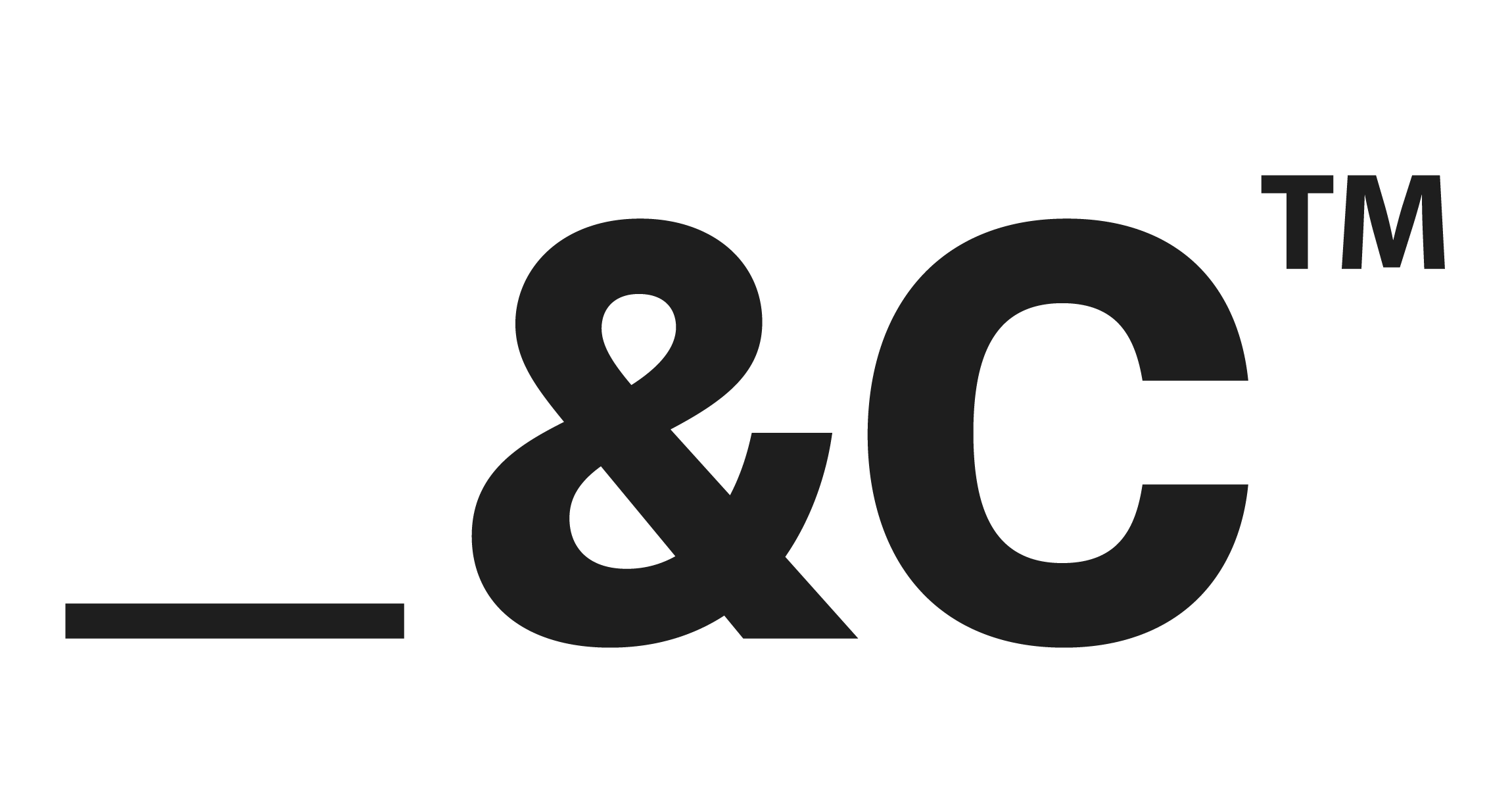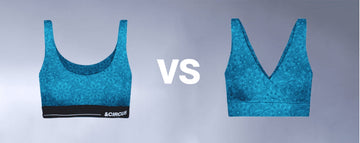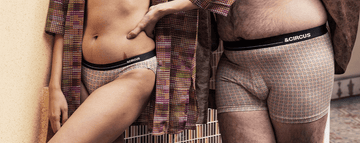Quick Listen:
It's 7 a.m., and the modern woman is already in motion sipping coffee, dashing to a yoga class, or juggling emails while prepping for a day of errands. Her wardrobe needs to keep up, and increasingly, so does her lingerie. Gone are the days when undergarments were just about aesthetics or rigid support. Today's innerwear is stepping into the spotlight, blending performance, comfort, and sustainability to match the dynamic lives of women who move seamlessly between work, wellness, and everything in between.
Uncomfortable underwear shouldn't steal your confidence. At Andcircus, we craft ultra-soft, sustainable Lenzing Modal Micro® innerwear for every body, XS to 5XL. From briefs to bras, our custom packs fit you perfectly. Shop risk-free with our 100% satisfaction guarantee and embrace comfort that includes everyone. #LoveEveryBody. Shop Now!
How Women's Lingerie is Evolving for Active Lifestyles
The lingerie industry is undergoing a quiet revolution. According to a 2025 report from Mordor Intelligence, the North America lingerie market is projected to grow from USD 14.54 billion in 2025 to USD 17.94 billion by 2030, at a compound annual growth rate (CAGR) of 4.29%. This growth isn't just about lace and satin; it's fueled by a demand for undergarments that prioritize comfort and functionality without sacrificing style. Women are no longer choosing between looking good and feeling good they expect both.
Enter the rise of movement-ready lingerie, a category that borrows heavily from the athleisure trend. Athleisure, a hybrid of athletic and leisurewear, has reshaped fashion, with the global market valued at USD 431.70 billion in 2024 and projected to reach USD 1,069.84 billion by 2034, per Precedence Research. Lingerie is catching up, adopting breathable, moisture-wicking fabrics like micromodal and seamless designs that move with the body, whether during a low-impact workout or a long day of errands.
A New Era of Innerwear
The shift toward active-adapted lingerie is more than a trend; it's a response to how women live now. Hybrid work schedules, fitness routines squeezed into lunch breaks, and the demands of motherhood have redefined what women need from their undergarments. Brands are responding with pieces that blur the lines between traditional lingerie and activewear. Think nursing bralettes that double as light sports bras or seamless panties crafted from eco-friendly micromodal, a fabric prized for its softness and breathability.
Micromodal, in particular, is gaining traction for its sustainability and performance. Unlike cotton, which can trap moisture, micromodal wicks sweat and dries quickly, making it ideal for women on the go. Its eco-credentials derived from renewable beechwood and requiring less water to produce than cotton also align with the growing demand for sustainable fashion. This focus on eco-conscious materials is resonating with consumers, especially as awareness of body positivity and personal styling drives the global lingerie market, valued at USD 90.0 billion in 2024 and expected to reach USD 151.0 billion by 2033, according to IMARC Group.
Seamless construction and wireless support are also game-changers. These designs prioritize ease of movement, eliminating the discomfort of underwire or bulky seams during a yoga flow or a commute. For women balancing multiple roles, these pieces offer all-day wearability versatile enough for a morning jog, a midday meeting, or an evening chasing toddlers.
Brands Leading the Charge
Sustainable brands are at the forefront of this shift, reimagining lingerie for active lifestyles. Companies using micromodal are particularly innovative, offering collections that combine featherlight comfort with durability. One such brand recently launched a line of high-waisted panties designed for postpartum women, blending adaptive stretch with breathable fabric to support recovery while accommodating movement. Influencers have taken note, with many praising these pieces for their versatility perfect for everything from travel to light workouts.
Compare this to traditional lingerie, like the push-up bras that defined Victoria's Secret's mid-2000s heyday. As Vogue Business noted in a 2024 report, the brand's recent attempt to revive its iconic show leaned heavily on nostalgia for “pushed-up boobs.” Yet, post-pandemic consumers are prioritizing comfort and fit over dramatic silhouettes. Victoria's Secret's market share has slipped from 32% in 2015 to 19% in 2020, per NPD Group, reflecting a broader shift toward brands that align with modern values of inclusivity and functionality.
Consumer feedback underscores this change. On social platforms, women share stories of ditching rigid underwire bras for wireless, athleisure-inspired options that feel like a second skin. One influencer described her micromodal bralette as “the only thing I can wear from morning yoga to a night out without feeling trapped.” These real-world endorsements highlight how active-adapted lingerie is winning hearts by prioritizing lived experience over aesthetics alone.
Challenges in the Comfort-First Era
Still, the transition isn't without hurdles. Balancing support with breathability remains a challenge, especially for diverse body types. Larger busts, for instance, often require more structure, which can clash with the minimalist ethos of seamless designs. Brands must also educate consumers about fabric benefits micromodal's superiority over cotton isn't immediately obvious to everyone. And while functionality is key, women still want lingerie that feels feminine, not utilitarian. Striking that balance is a tightrope walk.
Sizing inclusivity is another sticking point. Many brands are expanding their ranges, but gaps remain, particularly for postpartum women who need adaptable, supportive pieces. The industry is learning, but progress is uneven. Some companies are leveraging technology think AI-driven sizing algorithms and 3D body scanning to offer personalized fits, a trend transforming the North American lingerie market, as noted by Mordor Intelligence.
Opportunities for Growth
The “comfort-first” movement is a goldmine for brands willing to innovate. The projected growth of the global lingerie and athleisure markets signals strong consumer demand for pieces that marry style with utility. Sustainable brands, in particular, are building loyalty by emphasizing eco-friendly materials like micromodal, which appeals to environmentally conscious shoppers. The maternity and postpartum segments are also ripe for expansion, with crossover designs that serve as both supportwear and activewear gaining traction.
Beyond product innovation, there's a cultural shift at play. Lingerie is no longer just about seduction or static beauty; it's about empowerment through movement. Brands that position themselves as partners in women's dynamic lives whether through inclusive sizing, sustainable practices, or versatile designs are poised to thrive.
The Future of Functional Femininity
What's next for lingerie? Fashion technologists are buzzing about the possibilities. AI-driven sizing could make ill-fitting bras a thing of the past, while smart fabrics might one day adjust to body temperature or activity levels. Sustainable textile designers are also pushing boundaries, experimenting with biodegradable elastics and recycled fibers to reduce environmental impact.
For women balancing wellness, work, and motherhood, lingerie is becoming a quiet ally an enabler of mobility and confidence. It's no longer about standing still in a glossy store, surrounded by lace and body spray, as was once the case with Victoria's Secret. Today's innerwear moves with you, whether you're flowing through a vinyasa, racing to a meeting, or stealing a moment for yourself. In this new era, lingerie isn't just worn; it's lived in.
Frequently Asked Questions
What makes lingerie suitable for active lifestyles today?
Modern lingerie incorporates breathable, moisture-wicking fabrics like micromodal and seamless designs that move with the body. These performance-oriented pieces provide wireless support and all-day comfort, ideal for multitasking women balancing work, fitness, and family life.
Why is micromodal preferred over cotton in active innerwear?
Micromodal offers superior breathability, quick-drying properties, and a softer feel compared to traditional cotton. Derived from renewable beechwood, it's also more eco-friendly, aligning with consumer demand for sustainable, high-performance lingerie.
How are lingerie brands addressing the need for inclusive and comfortable designs?
Leading brands are expanding size ranges, offering adaptive fits for postpartum women, and leveraging technologies like AI-driven sizing tools. These innovations ensure lingerie supports diverse body types while prioritizing comfort, function, and sustainability.
Disclaimer: The above helpful resources content contains personal opinions and experiences. The information provided is for general knowledge and does not constitute professional advice.
You may also be interested in: Soft, Sustainable, Stylish: What Women Want in Everyday Underwear
Uncomfortable underwear shouldn't steal your confidence. At Andcircus, we craft ultra-soft, sustainable Lenzing Modal Micro® innerwear for every body, XS to 5XL. From briefs to bras, our custom packs fit you perfectly. Shop risk-free with our 100% satisfaction guarantee and embrace comfort that includes everyone. #LoveEveryBody. Shop Now!


















































